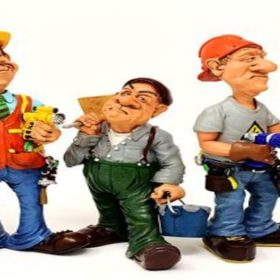Tips for Hand and Power Tool Safety
[caption id="attachment_562" align="aligncenter" width="800"] Tips for Hand and Power Tool Safety[/caption]
Tips for Hand and Power Tool Safety[/caption]
Tips for Hand and Power Tool Safety
General safety tips for hand and power tools:
- Buy quality tools. Many tools, including cutters and hammers, should be made of steel and should be heat-treated.
- Regularly inspect tools to make sure they are in good shape and fit for use.
- Be sure to maintain your tools by performing regular maintenance, like grinding or sharpening. Always follow the manufacturer’s instructions.
- Dress for the job by avoiding loose clothing or articles that can get caught in a tool’s moving parts, like jewelry.
- Wear appropriate personal protective equipment, like leather gloves.
- Use the right tool for the job. In other words, don’t try to use a wrench as a hammer.
- Make sure that your feet are planted on a stable surface.
- Be aware of the people around you and make sure they stay clear of the tools you are using.
- Never carry tools up a ladder by hand. Instead, use a bucket or bag to hoist tools from the ground to the worker.
- When working at heights, never leave tools lying out in the areas where they could present a hazard to workers below.
- When appropriate, secure work with a clamp or vise to keep it from slipping.
- Never carry pointed tools in your pocket. Carry them in a toolbox or cart instead.
- Inspect your tools on a regular basis, checking for damage. Report damaged tools to your supervisor.
- Make sure to keep extra tools handy in case the tool you had planned to use is damaged.
- Make sure tools are stored in a safe place.
Safety tips for electric power tools:
- Keep floors dry and clean to avoid slipping while working with or around dangerous tools.
- Keep cords from presenting a tripping hazard.
- Never carry a power tool by its cord.
- Use tools that are double-insulated or have a three-pronged cord and are plugged into a grounded receptacle.
- Do not use electric tools in wet conditions unless they are approved for that use.
- Use a ground fault circuit interrupter (GFCI) or an assured grounding program.
- Use appropriate PPE.
- Verify that all parts of the tool are fastened securely before use.
- Never point a compressed air gun at yourself or another person.
- When you are finished using the tool, make sure that the pressure is released before you break the hose connections.
- Use a safety clip or retainer to prevent attachments from being ejected during operation, and use a chip guard when using high-pressure compressed air for cleaning. Be sure to limit the nozzle pressure to 30 pounds per square inch.
- Always wear eye protection.
- Use screens to protect nearby workers from flying fragments.
- Never leave your tool unattended.
- Never store a loaded air gun.
Labels: Hand Tools, Power Tools
